For Appointments & Consultations Call Us Today:
Prevention
Prevention is really the answer to staying breast cancer free.
10 Important Steps to Prevention
What you are about to read are methods and strategies to dramatically reduce your risk of not only breast cancer but most cancers in general. This information has been gleaned from many sources, by far the most important book I’ve read on cancer is Tripping Over The Truth by Travis Christofferson, and I can’t recommend it highly enough. Three other sources I should mention are Life Extension Foundation; Natural Strategies for Cancer Patients by Russell Blalock, MD and Dr. Christine Horner’s book Waking the Warrior Goddess.
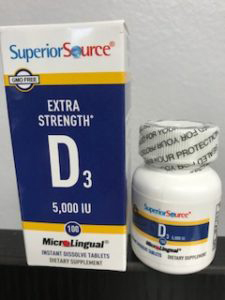
1. Vitamin D
Studies have identified a superstar of breast cancer prevention – vitamin D. Women with higher levels of vitamin D have a reduced cancer risk of 50% or more for most cancers including breast. Vitamin D protects against cancer by helping the body regain control over genes that regulate cellular proliferation, differentiation, and apoptosis (death of defective cells). These three types of processes: proliferation, differentiation, and apoptosis are key factors in cancer. Without a sufficient level of vitamin D the expression of the genes that regulate these processes become defective.
Numerous studies have demonstrated the effectiveness of vitamin D.
Many studies demonstrate that women with higher levels of vitamin D have significantly lower rates of breast cancer.
In 2007, a large, double blind, placebo-controlled study showed after four years of vitamin D supplementation with calcium, a 60% decrease in all cancers was attained, compared to the placebo group. On further analysis of the data, eliminating those diagnosed in the first year of the study (since they already had the cancer before taking vitamin D), the reductions were 77%. These are absolutely astounding numbers!
Vitamin D is known as the sunshine vitamin because our skin converts sunlight to vitamin D. If you regularly sunbathe or use a tanning bed you may have enough vitamin D. If not the only way to get an adequate amount is to take vitamin D supplements. And the only way to know if you’re taking enough vitamin D is to be tested.
The blood test for vitamin D is 25, hydroxy vitamin D. An optimal level is 50 to 80. Getting to those levels is likely going to take 5,000 to 10,000 IU’s a day. Some of us, me included, don’t absorb vitamin D well and need a special form called sublingual vitamin D3. My favorite comes from Superior Source and can be found in nearly any health food store. Bottom line, supplement with vitamin D and get your levels checked at least once a year.

2. Exercise
There are additional strategies that lower our risk of breast cancer, such as exercise. A study published in a major cancer journal, February, 2007 determined you can reduce your risk of invasive breast cancer by 23% by doing six hours of strenuous exercise a week. Exercise is also known to lower risks of heart disease, likely by the same mechanism – lowering insulin and leptin levels and increasing mitochondrial biogenesis.
Obesity raises your risk of cancer. There is one primary reason for the obesity epidemic and that is sugar. It is a terribly addictive substance no matter what name it goes by and there are many, but the most common is high fructose corn syrup. Read labels – it is in nearly every package we purchase. Maltose, fructose, glucose, sucrose are all sugars. Notice they all end in ‘ose’, which means sugar. Avoid it!
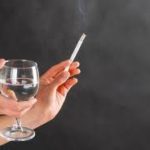
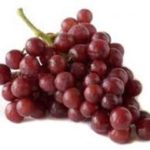
3. Eat and Drink
Studies have also shown a direct link between cancer risk and what we eat and drink. Women who eat red meat have higher rates of breast cancer. I believe the threat lies not only with the meat, but also in how it’s cooked. There is no question that cooking at high temperatures (whether frying, broiling or barbecuing) produces cancer-causing chemicals called heterocyclic amines. The addition of vitamin E and fruits like blueberries to your diet inhibits the effects of these chemicals.
The best seller, The China Study, has shown conclusive evidence that too much milk and milk products cause cancer! It’s the casein in milk that is the problem, 100% of rats given 20% casein in their diet with the cancer causing agent aflotoxin, got cancer. Reducing the amount of casein to 5% reduced the number to zero. Whey protein from milk is devoid of this dangerous protein. We should all eat less red meat, dairy and sugary processed foods and eat more fruits and vegetables.
Cancer cells live on sugar. Normal cells can function and produce energy using carbohydrates (sugar), fat or ketones. Cancer is different, they must have sugar or they die. Cancer cells produce most of their energy through a different process than normal cells, called fermentation. This fact was discovered in the 1920’s by Nobel Prize winner, Otto Warburg and still known as the Warburg effect. He felt cancer was due to this energy problem all along. (Interestingly the definitive test for cancer, the PET Scan, utilizes this mechanism to identify cancerous areas.)
For decades cancer has been seen as a genetic disease. Nearly everyone believed that cancer was caused by an accumulation of genetic damage. That theory has recently been shown to be a myth. Certainly genetic damage is seen in cancer cells. It was easy to jump to the conclusion that this must be the driving force in cancer but in fact cancer begins outside the cell nucleus, in the cytoplasm of the cell.
Cancer is a metabolic disease meaning that it is all about energy production. All cells must produce energy to survive and do what they do. The energy is made in small organelles called mitochondria; most cells have thousands of these little energy factories. Mitochondrial dysfunction is the cause of cancer. Knowing this sheds new light on the treatment as well as the prevention of cancer.
Eliminating sugar and food high in carbohydrates becomes a powerful tool in any prevention strategy; I’m describing a low carb, high fat, moderate protein diet also known as a restricted ketogenic diet. Incorporating this diet once a year for at least a few weeks is an incredibly powerful tool in prevention, plus it has many other benefits since ketones are such a clean fuel to burn. You will likely lose some weight, feel and think better after your body adapts to burning ketones. Please read Tripping Over The Truth for all the studies. It reads like a mystery novel. Personally, it is one of the best books on health I’ve ever read. Also Dr. Mercola, the author of Fat For Fuel, has provided an excellent guide for converting your cells to burn fat.
Alcohol increases the risk of cancer. The more you drink the higher the risk, 3 drinks a day may increase your risk up to 70%! One of the mechanisms is thought to be a decrease in folic acid from drinking alcohol. Researchers have found women who drink a glass of wine with foods rich in foliate, or those who supplement with up to 400 mcgs a day, do not have an increased risk. Foods rich in folic acid include green leafy vegetables, citrus fruits, peas and beans. Do not take more than 400 mcgs of folate.
Smoking increases your risk of many cancers. Studies have shown smoking in adolescence increases your risk up to 50%.
Soy isoflavones are linked to decreased risk of both breast and prostate cancers. That said, soy is a very controversial subject. Most of the soy we consume in America is genetically modified and very different from the soy grown and consumed in the Far East. My suggestion – if you eat soy, consume fermented soy products like Natto, Tempe and Miso. One of the more potent phytoestrogens (plant based estrogen) in soy is genestein. Studies have shown taking this in high dose supplement form actually increased cancer rates.
Fruit promotes the detoxification of carcinogens. A substance found in fruits called D-glucarate promotes the detoxification of carcinogens as well as estrogen, thereby lowering cancer risk. Cruciferous vegetables like broccoli, brussels sprouts, and cauliflower have compounds that help prevent numerous cancers, including breast cancer. Indole-3-carbinol and DIM are the specific compounds that alter estrogen metabolism in a positive way, specifically by altering the ratio of the dangerous 16-alpha hydroxyestrone to the more protective 2-hydroxyestrone. (That is likely more detail than you want or need) As preventions of breast cancer go, you can’t beat all the health benefits that fruits have to offer you, and they also taste good. That said, if you are following a ketogenic diet you must limit fruits to a few berries as fruits are loaded with sugar.
Resveratrol, found in red grapes and red wine, offers several medicinal benefits. The Journal of Carcinogenesis has found that Resveratrol helps to prevent breast cancer by reducing cellular proliferation and increasing apoptosis in mammary cells. Resveratrol is a substance found in red grapes and red wine. The scientific world is very excited about this substance because, in addition to cancer prevention, it has potent anti-aging properties and protects against heart disease as well. The greatest benefit comes from two and half grams of resveratrol daily. Grape seed extracts also have anti-cancer properties. They have phytochemicals called proanthocyanidins that are potent antioxidants as well as having numerous other benefits including blocking the aromatase enzyme that converts testosterone to estrogen.
Other herbs and spices shown to have anti-cancer properties include licorice root, rosemary, noni juice, cranberry, gingko biloba and ginseng.
Interestingly, coffee is protective against breast cancer. Coffee has weak plant estrogens that block the more powerful estrogens from binding to the cell receptor sites in the breast. It also contains polyphenols that exhibit chemo protective properties. Coffee is a problematic for women with fibrocystic breast disease and can make the problem worse. If that’s an issue for you I suggest you limit or give up coffee altogether.

4. Vitamins and Minerals
Flaxseed also promotes healthy metabolism of estrogen as does DIM.
Dietary lignin’s from fruits, vegetables and grains (especially flaxseed) also promote healthy metabolism of estrogen, as well as inhibit angiogenesis (blood vessel growth that feeds the cancer), and induce self-destruction of cancer cells (apoptosis). DIM, diindolemethane, from cruciferous vegetables, raises the good estrogens, the 2-hydroxy estrogens and lowers the “bad” estrogens, the 16-hydroxy estrogens. So eat your cruciferous veggies, lightly cooked or raw is best. If you supplement with DIM, use 100 to 200 mg per day with a meal. All of the substances mentioned in this article can be bought in supplement form.
Organic selenium has potent anti cancerous properties. Selenoexcell is high selenium yeast that I recommend (and inexpensive). There are 3 types of selenium; sodium selenite, L-selenomethionine and selenium-methyl L-selenocysteine. Each has its own unique anti-cancer properties. Not all selenium is the same, so stick with an organic form. Recent studies have shown that curcumin from the spice turmeric, garlic, green tea and pomegranate have anti-cancer effects. As a side note, I’m a huge fan of pomegranate for it benefits to the heart and vascular system.
Iodine has Anti-Cancer Properties. Iodine has been shown to cause apoptosis (or cell death) in breast and thyroid cancer cells. Iodine also functions as both a strong antioxidant as well as an oxidant in the body. This dual effect makes it a potent anti-cancer substance.
Vitamin K plays a significant role in cancer prevention as well as treatment. There is compelling clinical evidence as well as published laboratory science regarding vitamin K’s role in preventing as well as treating a variety of cancers. The science shows multiple pathways in which vitamin K can be helpful in treating cancer.
There are 2 types of vitamin K2: MK-4 and MK-7, (short and long term acting) and you need both. It’s difficult to get enough K in the foods we eat. I suggest you get 2000 mcgs. Life extension foundation has a Super K I personally use. www.LEF.org On a side note vitamin K is essential to keeping calcium in your bones and out of your vascular system. This means vitamin K is vitally important in fighting osteoporosis and vascular disease.
The evidence suggests vitamin A plays a role in cancer prevention. It’s preferable to get vitamin A through your diet. Foods high in vitamin A includes organic egg yolks, raw butter, also brightly colored orange and green vegetables like pumpkin, carrots, sweet potatoes and kale, orange fruits such as peaches, mangos and cantaloupe.
MSM methylsulfonylmethane, has been used for decades to help with arthritis. Recent research has shown it to be an effective strategy to reduce your risk of cancer. I suggest you mix the powered form in water and drink it throughout the day. For maximum benefit use 2 tbs. a day.
The sleep hormone melatonin is very protective against breast cancer. Disrupting our sleep cycles decreases our production of melatonin. Night shift nurses have been found to have a 50% increase risk of breast cancer.
Omega 3 fatty acids reduce the risk of breast cancer. This occurs by 3 fundamental mechanisms. First they reduce inflammation, second they subdue the effects of estrogen and third, they act as antioxidants reducing free radical damage.
Those women with breast cancer have the best outcomes when they supplement with Omega 3′s. Researchers have found that tumors shrink in size and reduce the spread of cancer to other parts of the body (metastasis). One of the most important numbers you can know is your ratio of omega 6 to omega 3 fatty acids. Ask your doctor to order it for you or have it done in our office. Your goal is to reduce it to at least a 4 to 1 ratio.
Most Americans are in the highly inflammatory 20 to 1 ratio. I don’t recommend eating more fish to achieve this goal. Fish have accumulated mercury and other toxins from the polluted seas they live in, and the smaller fish they eat, a process known as bioaccumulation.
There are plant based omega 3′s including flax, pumpkin, hemp, and chia seeds as well as walnuts, soy beans, winter squash and ground oregano, but getting an adequate amount from these sources is problematic. Taking fish oil supplements from reputable sources is my recommendation not only for breast cancer prevention but a host of other benefits including lowering the risk heart disease.

5. Your Liver
Treat your liver kindly. It is responsible for the major portion of your detoxification system. There are several substances that help with detoxification. The most important is glutathione peroxidase, one of your most powerful endogenous antioxidants. Undenatured whey protein and N acetyl cysteine (NAC) increase your production of glutathione ten-fold. You can also supplement with a reduced form of glutathione. It used to be thought that it didn’t work and that it was simply broken down in the gut, but recent research has proven that to be false. The Japanese company Setria makes a reduced L glutathione. I take 500 mg twice a day as well as using whey.
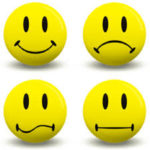
6. Emotions
Negative emotions increase a woman’s risk of breast cancer. Many studies have demonstrated this mind-body connection. Every thought and emotion influence gene expression. Women that have experienced emotional traumas from the loss of family, or divorce or even the loss of a job are at higher risk. The risk isn’t small. A 1995 study demonstrated a 12-fold increase risk in women that experienced a major emotional stress. Your attitudes, feelings and emotions are more important to your overall health than you ever imagined.
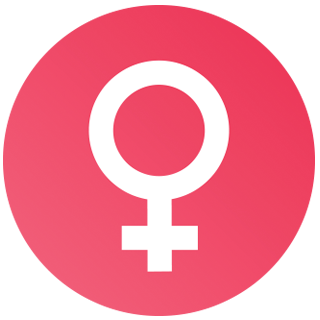
7. Hormones
Estrogen, Progesterone and Breast Cancer. I can’t leave out a brief discussion of estrogen and progesterone and their role in breast cancer. Estrogen causes cell growth and proliferation. You may hear that you should avoid taking natural estrogen and progesterone because of fears of breast and other cancers.
However, there are major benefits from bio-identical hormone replacement therapy. The final decision of natural hormone replacement is up to you. If you choose to use bio-identical hormone replacement ask your doctor to prescribe biest or triest as they include the much weaker estrogens estrase and estrone along with the much more powerful estradiol. And in my opinion the patch is preferable to pills.
Women can cut them in half or use them less frequently to control the symptoms of menopause. I’m definitely opposed to the use of synthetic hormones, those that are foreign to your body, like the prescription drugs Prempro and Provera. It is well documented that too much estrogen, whether natural or synthetic significantly increases a woman’s risk of breast cancer.
The late John Lee, MD was an advocate for the use of natural progesterone for women, particularly those over 40. His decades of clinical experience led him to the conclusion that natural progesterone was protective against breast cancer as well as osteoporosis. He recommended using 20 to 25 milligrams of progesterone cream a day for 20 to 25 days a month for those women that no longer made progesterone or were not making enough. He may have been wrong. There are no long-term studies showing that natural progesterone is safe. Studies have shown women using the synthetic form called progestin increased their risk of breast cancer by 100%.
Dr. Lee also recommended using salivary hormonal testing to determine how much free progesterone and estrogen was circulating in the body. When your doctor orders a blood test for these hormones the total amount of these hormones are measured, and that includes the inactive form that is bound to something called a sex hormone binding globulin. (I know, I know, that’s way more information than you need but some of you want all the reasoning behind these recommendations). His website is www.johnleemd.com
There are chemicals in our environment that act like estrogens in our bodies called xeno estrogens that contribute to estrogen dominance. Plastic water bottles contain these chemicals as well as the inside lining of almost all canned goods. Never microwave in plastic and don’t freeze your water bottles, as this causes these chemicals to leach out into the water or foods we consume.
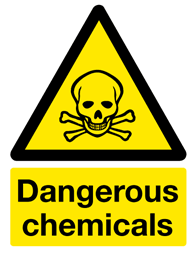
8. Chemicals
Avoid chemicals and harmful substances in our environment. There are an outrageous number of cancer causing chemicals in our environment to which we are exposed on a regular basis. There are too many to list, but included are flame retardants, polyurethane, certain dyes, solvents used in dry-cleaning, hair spray propellant, styrene in Styrofoam cups, paint, spot remover, gasoline fumes, aluminum, parabens, sealants, pesticides and cleaning agents.
Always use heavy-duty rubber gloves in a well-ventilated area when using cleaning agents or pesticides. Even better, use only natural cleaning and pest control agents/devices (many online sites for these). The substances in chemical cleaners and pesticides are absorbed right through your skin. Even personal care products such as perfumes, skin lotions and antiperspirants often contain harmful substances. Go to www.ewg.org/skindeep/ for info to determine the toxicity of what you are using – a truly eye-opening experience, as many of the even “natural” products contain many toxic, carcinogenic additives.
Many of these harmful chemicals are concentrated and stored in the fat of the animals you eat. If you are a meat eater I highly recommend you buy only organic meat. That goes for your vegetables, too as they can contain high concentrations of pesticides. For instance, conventionally grown celery was found to have 10 cancer causing pesticides. The same was true for apples!
If you live in California, your exposure to flame-retardants is inescapable. Decades ago, then governor Jerry Brown assigned into law a bill that required all furniture, bedding and carpets to be treated with flame retardants. He has recently rescinded that law when it became clear how dangerous these chemicals are. Don’t cook with Teflon coated cookware. One of the chemicals in Teflon is perfluorooctanoic acid or PFOA. It has numerous health issues associated with it, including cancer and heart disease.
PFOAs are also found in microwave popcorn, candy wrappers and pizza box liners. The truly frightening thing about PFOAs is this chemical never breaks down in the environment, and accumulates in both humans and wildlife. It is now one of the worst contaminates in our oceans.
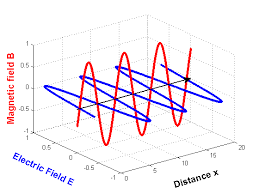
9. EMF's
Reduce your exposure to dangerous electromagnetic fields. EMFs are electromagnetic fields, sometimes referred to as dirty electricity. They do cause cancer and a host of other problems. Robert O. Becker, MD author of Cross Currents and The Body Electric stated, “The greatest polluting element in the earth’s environment is the proliferation of electromagnetic fields. I consider that to be far greater on a global scale than global warming”.
We are all surrounded by these fields and about half of us have some symptoms and for some it’s cancer. For me it was high blood sugar. By removing these dangerous frequencies with Graham/Stetzer filters my blood sugar levels dropped 20 points and returned to normal within 3 days.
There are excellent websites on the subject.www.Stetzerelectric.com and www.dirtyelectricityusa.com are worth visiting. I highly recommend the book by Donna Fisher called Dirty Electricity and Electromagnetic Radiation. You can check your own home for elevated levels by using a Graham/Stetzer meter. Levels should be under 25. I’ve never seen a home without filters that was in this range. Our electrical appliances, computers, TV’s, compact fluorescent lights, dimmer switches and other electrical gadgets create these dangerous fields. I can’t encourage you enough to check out your home and work environment and reduce your exposure.
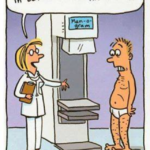
10. Radiation
Reduce your exposure to x-rays. Breast tissue is highly susceptible to ionizing radiation found in medical x-ray imaging including mammography and even more in 3D mammography. As you age, it becomes even more important to perform a breast self-exam on a regular basis (such as every day in the shower) because your risk of breast cancer increases with age. A sound breast cancer prevention plan utilizes numerous strategies including a restricted ketogenic diet for a few weeks every year, an optimal intake of vitamin D, changing to a more plant based diet and reducing your intake of well-done red meat.
The specific compounds in foods that reduce the risk of breast cancer are I3C, DIM, lignans, D-glucarate, soy isoflavones, and omega 3 fatty acids. Six hours a week of strenuous exercise and avoidance of cancer causing chemicals as well as reducing your exposure of dangerous EMF’s in your environment round out my recommendations.
Actively following these preventions for breast cancer does not completely protect you – you should also be screened regularly.
In addition to having regular screenings for breast cancer, performing a breast self-exam frequently is also important. The combination of the breast self-exam and screenings, like the digital breast exam, SureTouch, could be the difference between detecting a lump in its early stage and not detecting it until it is in the advanced stages, or worse, not detecting it at all.
Get Tested! It’s an easy, painless way to help you stay breast cancer free!
Location
11770 Warner Ave. #122
Fountain Valley, CA 92708
Consultations: 714-363-5595
Appointments: 714-633-9532
